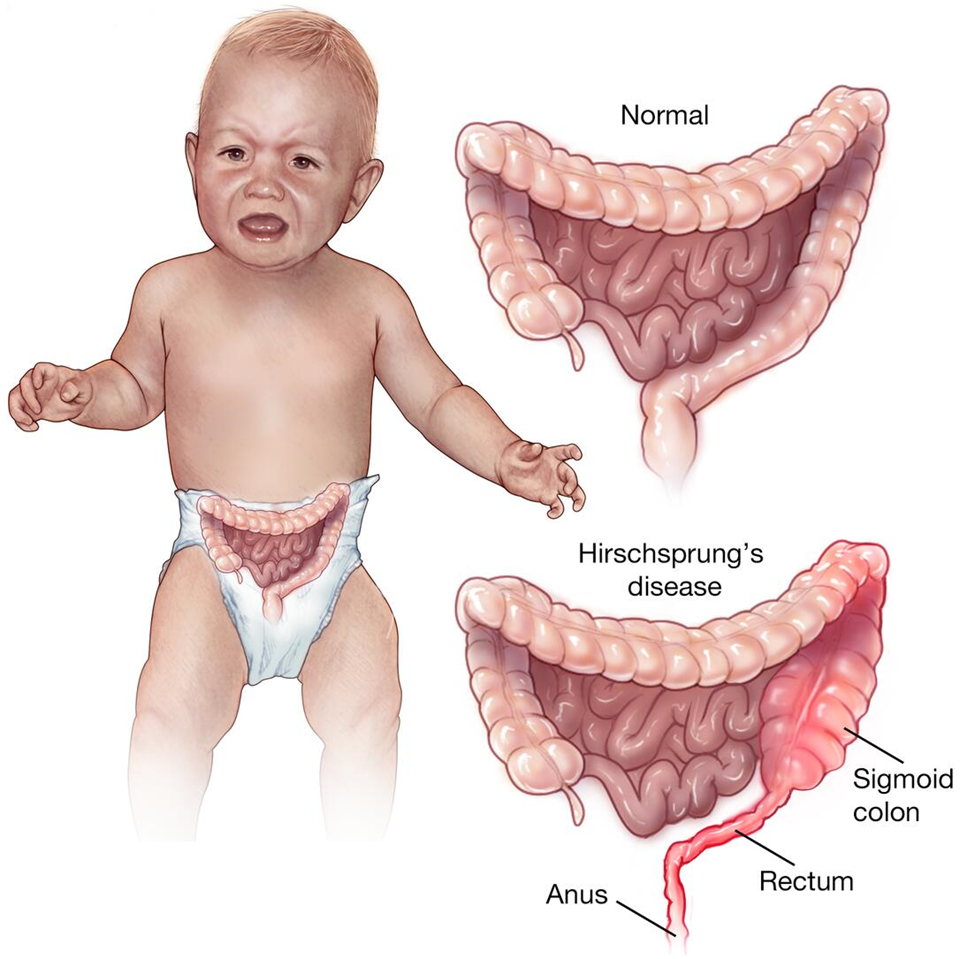A nurse is collecting data from an infant who has gastroesophageal reflux. Which of the following findings should the nurse expect? (Select the 3 that apply.)
Wheezing
Rigid abdomen
Pallor
Weight loss
Vomiting
Correct Answer : A,D,E
A. Wheezing: Wheezing is a common symptom associated with asthma, which can be exacerbated by gastroesophageal reflux (GER) in infants. GER occurs when stomach contents flow back into the esophagus, leading to irritation and inflammation of the airways. This inflammation can cause wheezing sounds during breathing, especially if the refluxed material reaches the lower respiratory tract.
B. Rigid abdomen: While gastroesophageal reflux (GER) primarily affects the upper gastrointestinal tract, it typically does not cause a rigid abdomen. A rigid abdomen may indicate other underlying gastrointestinal issues such as bowel obstruction, intussusception, or peritonitis. These conditions are not typically associated with GER in infants.
C. Pallor: Pallor, or paleness of the skin, is not a common symptom of gastroesophageal reflux (GER) in infants. GER primarily affects the upper gastrointestinal tract and is characterized by symptoms such as spitting up, regurgitation, and irritability. Pallor may be indicative of other health issues such as anemia or circulatory problems but is not directly related to GER.
D. Weight loss: Weight loss can occur in infants with gastroesophageal reflux (GER) if frequent vomiting leads to inadequate intake of nutrients. However, it is not a direct symptom of GER itself. Infants with GER may experience feeding difficulties, irritability, and discomfort associated with feeding, which can contribute to poor weight gain over time if not managed effectively.
E. Vomiting: Vomiting is a common symptom of gastroesophageal reflux (GER) in infants. It occurs when stomach contents flow back up into the esophagus and sometimes out of the mouth. Infants with GER may spit up or vomit frequently after feeding or during burping, which can lead to discomfort and irritability. Vomiting may also contribute to poor weight gain and nutritional deficiencies if not managed effectively.
Nursing Test Bank
Naxlex Comprehensive Predictor Exams
Related Questions
Correct Answer is D
Explanation
A. Abdominal wall defect:
Failure to pass meconium within the first 24 hours after birth can indicate a potential obstruction in the gastrointestinal tract. While an abdominal wall defect could potentially cause gastrointestinal issues, it is not specifically associated with failure to pass meconium.
B. Celiac disease:
Celiac disease is an autoimmune disorder characterized by an abnormal immune response to gluten. While celiac disease can cause gastrointestinal symptoms, such as diarrhea and abdominal pain, it is not typically associated with failure to pass meconium in the newborn period.
C. Intussusception:
Intussusception occurs when one segment of the intestine telescopes into another, causing a bowel obstruction. While intussusception is a cause of bowel obstruction in infants, it typically presents with symptoms such as colicky abdominal pain, vomiting, and the passage of "currant jelly" stool, rather than failure to pass meconium.
D. Hirschsprung disease:
Hirschsprung disease is a congenital condition characterized by the absence of ganglion cells in the distal portion of the colon, leading to functional obstruction. Failure to pass meconium within the first 24 hours after birth is a classic sign of Hirschsprung disease. This condition requires surgical intervention to remove the affected portion of the colon and restore normal bowel function.

Correct Answer is ["B","D","E"]
Explanation
A. Bed in highest position:
The height of the bed is not directly related to seizure precautions.
B. Remove restrictive objects or clothing from patients’ body:
This is important to prevent injury during a seizure episode.
C. Remove all pillows from the patient's head:
While it's generally a good practice to remove pillows to prevent suffocation or obstruction, it's not specifically related to seizure precautions.
D. Oxygen and suction at bedside:
Oxygen and suction should be readily available to support the patient's respiratory status and clear any secretions or vomit during or after a seizure.
E. Padded bed rails:
Padded bed rails can help prevent injury if the patient thrashes or moves violently during a seizure.
Whether you are a student looking to ace your exams or a practicing nurse seeking to enhance your expertise , our nursing education contents will empower you with the confidence and competence to make a difference in the lives of patients and become a respected leader in the healthcare field.
Visit Naxlex, invest in your future and unlock endless possibilities with our unparalleled nursing education contents today
Report Wrong Answer on the Current Question
Do you disagree with the answer? If yes, what is your expected answer? Explain.
Kindly be descriptive with the issue you are facing.
